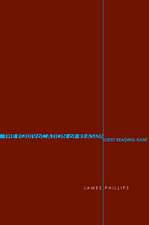Making the DSM-5: Concepts and Controversies
Editat de Joel Paris, James Phillipsen Limba Engleză Paperback – 17 mai 2013
In Making the DSM-5, prominent experts delve into the debate about psychiatric nosology and examine the conceptual and pragmatic issues underlying the new manual. While retracing the historic controversy over DSM, considering the political context and economic impact of the manual, and focusing on what was revised or left unchanged in the new edition, this timely volume addresses the main concerns of the future of psychiatry and questions whether the DSM legacy can truly improve the specialty and advance its goals.
Preț: 647.69 lei
Preț vechi: 681.79 lei
-5% Nou
Puncte Express: 972
Preț estimativ în valută:
123.97€ • 128.93$ • 103.88£
123.97€ • 128.93$ • 103.88£
Carte tipărită la comandă
Livrare economică 13-27 martie
Preluare comenzi: 021 569.72.76
Specificații
ISBN-13: 9781461465034
ISBN-10: 1461465036
Pagini: 192
Ilustrații: IX, 180 p.
Dimensiuni: 155 x 235 x 15 mm
Greutate: 0.3 kg
Ediția:2013
Editura: Springer
Colecția Springer
Locul publicării:New York, NY, United States
ISBN-10: 1461465036
Pagini: 192
Ilustrații: IX, 180 p.
Dimensiuni: 155 x 235 x 15 mm
Greutate: 0.3 kg
Ediția:2013
Editura: Springer
Colecția Springer
Locul publicării:New York, NY, United States
Public țintă
Professional/practitionerCuprins
The History of DSM.- Considering the Economy of DSM Alternatives.- The Ideology behind DSM-5.- The Biopolitics of Defining “Mental Disorder”.- Establishing Normative Validity for Scientific Psychiatric Nosology: The Significance of Integrating Patient Perspectives.- The Paradox of Professional Success: Grand Ambition, Furious Resistance, and the Derailment of the DSM-5 Revision.- DSM in Philosophyland: Curiouser and Curiouser.- Overdiagnosis, Underdiagnosis, Synthesis: A Dialectic for Psychiatry and the DSM.- What does Phenomenology Contribute to the Debate about DSM-5.- The Conceptual Status of DSM-5 Diagnoses.- Conclusion.
Recenzii
From the reviews:
“Making the DSM–5, is an edited book comprising 11 chapters, eight of which were written by individuals who listed medical school affiliations. … is a consistently engaging and thought-provoking read. … the authors address issues that the leaders of the DSM–5 process generally seemed to ignore. … should be required reading of any task force members who attempt to create the DSM–6.” (Roger Blashfield, PsycCRITIQUES, Vol. 59 (14), April, 2014)
“This book addresses the formation of the DSM-5 and the problems with the manual itself. … The audience includes anyone interested in the field of mental health and the DSM-5 in particular. … It will definitely open readers’ eyes to how little we still know and how artificial our constructs are for understanding mental illness. It is a short book and I would highly recommend taking the time to read it.” (Brett C. Plyler, Doody’s Book Reviews, November, 2013)
“Making the DSM–5, is an edited book comprising 11 chapters, eight of which were written by individuals who listed medical school affiliations. … is a consistently engaging and thought-provoking read. … the authors address issues that the leaders of the DSM–5 process generally seemed to ignore. … should be required reading of any task force members who attempt to create the DSM–6.” (Roger Blashfield, PsycCRITIQUES, Vol. 59 (14), April, 2014)
“This book addresses the formation of the DSM-5 and the problems with the manual itself. … The audience includes anyone interested in the field of mental health and the DSM-5 in particular. … It will definitely open readers’ eyes to how little we still know and how artificial our constructs are for understanding mental illness. It is a short book and I would highly recommend taking the time to read it.” (Brett C. Plyler, Doody’s Book Reviews, November, 2013)
Notă biografică
Joel Paris, MD, is Professor and Chair of the Department of Psychiatry at McGill University, and Research Associate in the Department of Psychiatry at Sir Mortimer B. Davis Jewish General Hospital.
James Phillips, MD, is Associate Clinical Professor of Psychiatry at the Yale School of Medicine. He is in the private practice of general and forensic psychiatry. In the Yale department he is involved in residency training, the Hispanic Clinic, and the Global Mental Health Committee. He has a long involvement with the Association for the Advancement of Philosophy and Psychiatry, serving as Secretary and as editor of the Bulletin of AAPP.
James Phillips, MD, is Associate Clinical Professor of Psychiatry at the Yale School of Medicine. He is in the private practice of general and forensic psychiatry. In the Yale department he is involved in residency training, the Hispanic Clinic, and the Global Mental Health Committee. He has a long involvement with the Association for the Advancement of Philosophy and Psychiatry, serving as Secretary and as editor of the Bulletin of AAPP.
Textul de pe ultima copertă
In 2013, the American Psychiatric Association published the 5th edition of its Diagnostic and Statistical Manual of Mental Disorders (DSM-5). Often referred to as the “bible” of psychiatry, the manual only classifies mental disorders and does not explain them or guide their treatment. While science should be the basis of any diagnostic system, to date, there is no knowledge on whether most conditions listed in the manual are true diseases. Moreover, in DSM-5 the overall definition of mental disorder is weak, failing to distinguish psychopathology from normality. In spite of all the progress that has been made in neuroscience over the last few decades, the psychiatric community is no closer to understanding the etiology and pathogenesis of mental disorders than it was fifty years ago.
In Making the DSM-5, prominent experts delve into the debate about psychiatric nosology and examine the conceptual and pragmatic issues underlying the new manual. While retracing the historic controversy over DSM, considering the political context and economic impact of the manual, and focusing on what was revised or left unchanged in the new edition, this timely volume addresses the main concerns of the future of psychiatry and questions whether the DSM legacy can truly improve the specialty and advance its goals.
In Making the DSM-5, prominent experts delve into the debate about psychiatric nosology and examine the conceptual and pragmatic issues underlying the new manual. While retracing the historic controversy over DSM, considering the political context and economic impact of the manual, and focusing on what was revised or left unchanged in the new edition, this timely volume addresses the main concerns of the future of psychiatry and questions whether the DSM legacy can truly improve the specialty and advance its goals.
Caracteristici
Gathers an impressive cadre of renowned psychiatrists Delves into the current debate surrounding the historically controversial DSM Timely and indispensable to any psychiatrist who wants to be aware of the status and the issues related to the current psychiatric diagnostic system Includes supplementary material: sn.pub/extras



















